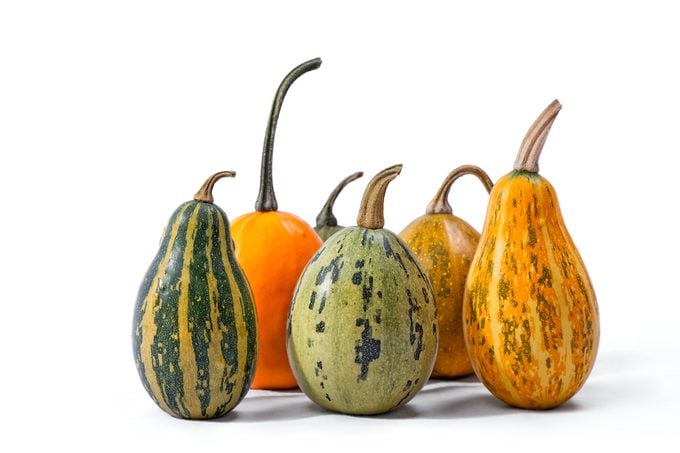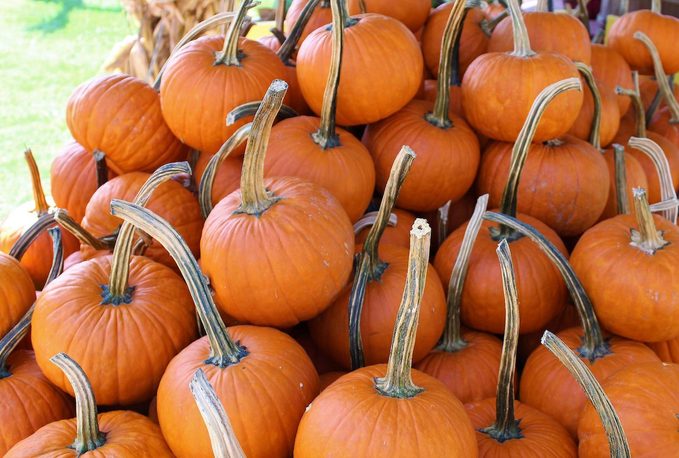How to Grow Your Own Pumpkins and Gourds
Updated: Aug. 24, 2022
Skip the pumpkin patch next year! Follow this step-by-step guide on how to grow the best backyard pumpkins and gourds.
Our editors and experts handpick every product we feature. We may earn a commission from your purchases.
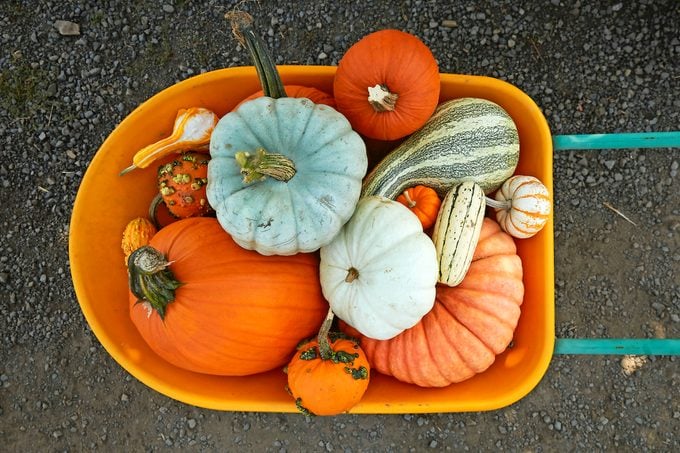
Whether dressing up indoor or outdoor spaces in fall or starring in seasonal desserts, pumpkins and gourds are autumn musts. To harvest them from your own garden next year, follow these simple tips on how to grow pumpkins. Then get a head start on your personal patch.
Pumpkins and gourds are members of the Cucurbitaceae family. When growing your own, pick from the wide assortment available in seed catalogs or online. Check out 10 seed catalogs every gardener needs.
Certain pumpkins are best for carving, while others make the sweetest pies. Read carefully to select pumpkin seeds that meet your garden goals.
Fruit sizes range from mini to massive; colors include classic orange as well as white, red, green, blue and yellow; and shapes vary from flat to round to tall.
Discover fascinating facts about pumpkins.
Growing Gourds
Gourds are also rewarding to grow. Two main types are available to gardeners: hard-shell and ornamental. Hard-shell gourds, such as birdhouse or long-dipper gourds, can be dried and kept indefinitely. The fruits are also edible when harvested immature. Ornamental gourds produce unique fruits in a wide mix of shapes, sizes and colors, but they aren’t edible and don’t dry well, so they’re best used as decor in autumn and then added to the compost pile.
Learn how to make a purple martin gourd house.
Tips to Grow Pumpkins Successfully
Do Pumpkins Need Full Sun?
Though they are pretty easy to grow, success with pumpkins and gourds begins with selecting the right spot. They need at least eight hours of sun each day as well as room for the vines to roam. If you lack growing space, plant bush or semi-bush options that don’t produce long vines.
Pumpkins and gourds are greedy plants, growing best when the soil is enhanced with several inches of compost or aged manure. It’s also a good idea to apply a slow-release vegetable fertilizer to the garden bed before planting.
Check out the top 10 vegetables that grow well in shade.
When to Plant Pumpkins
The heat-loving fruits shouldn’t be rushed into the spring garden since the seeds don’t germinate well in cold soil. Wait until your area’s last frost date has passed and the soil has warmed to 70 degrees. Then transplant or direct sow seeds into raised beds, in-ground gardens, straw bales, or hills, which are small mounds of soil piled up to improve drainage and raise soil temperature. Sow seeds a half inch to an inch deep. Spacing depends on the selected variety. Refer to your seed packets for specific spacing information.
Learn how to recycle pumpkins for birds and wildlife.
Pumpkin Fertilizer
Once in the garden, pumpkins and gourds are easygoing. Keep an eye on soil moisture, watering deeply when the soil is dry. Water the soil, not the plant, as splashing water can increase the risk of soil-borne disease. Promote healthy growth by fertilizing every two to three weeks with either a liquid kelp or fish fertilizer.
Stop Pumpkin Bugs
Also watch out for pests like squash bugs and squash vine borers. If borers are an annual issue in your garden, wrap a 6-inch piece of aluminum foil around the bottom of each stem. This helps reduce the number of female vine borers laying eggs on the plant stems.
Find out how to get rid of slugs and snails in the garden.
How to Grow Big Pumpkins
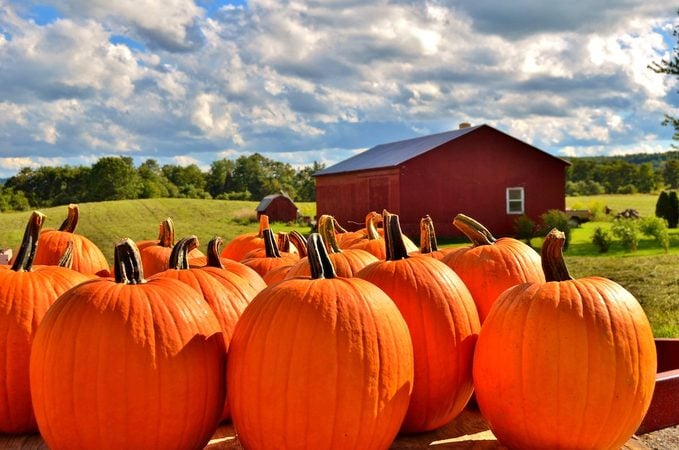
When several pumpkins have formed on each vine, pinch back the growing tip. This directs the plant’s energy into maturing existing fruits, not producing more flowers. The late flowers won’t have time to mature into good-sized pumpkins. Pinching also leads to bigger pumpkins. Pinching hard-shell gourds is helpful too, but there’s no need to prune back the plants of ornamental gourds.
Backyard project: Make a DIY pumpkin bird feeder.
How to Pollinate Pumpkins
During summer, another task to consider is pollination. Gourds and pumpkins produce separate male and female flowers. Pollen needs to be transferred from a male flower to a female flower for fruits to form. Bees typically take care of this, but you can lend Mother Nature a hand by using a small clean paintbrush to move pollen to the flowers. Hand pollinate on a dry, sunny day.
Create no-carve patterned pumpkins for Halloween.
How Long Do Pumpkins Take to Grow?
First-time growers may have a hard time knowing when it’s time to harvest their pumpkins and gourds. The biggest clue is color. With a sharp pair of pruners, clip fruits from vines when they’ve turned their mature color. Leave a 2-to-4-inch-long stem attached to each fruit. Be sure to harvest before a hard frost, which can damage the fruits. The number of days to maturity for pumpkins and gourds will vary depending on the variety, but expect a range of 90 to 120 days.
Check out the top 10 fall vegetables to extend the harvest.
Curing Pumpkins
Let pumpkins and gourds cure in the sun for five to seven days if the weather allows. Curing keeps pumpkins from decaying too quickly. If cold and frost are threats, bring the fruits indoors to a warm spot with decent air circulation to cure.
Psst—here’s more tips on how to preserve a pumpkin the right way.
The Best New Pumpkin Varieties to Grow
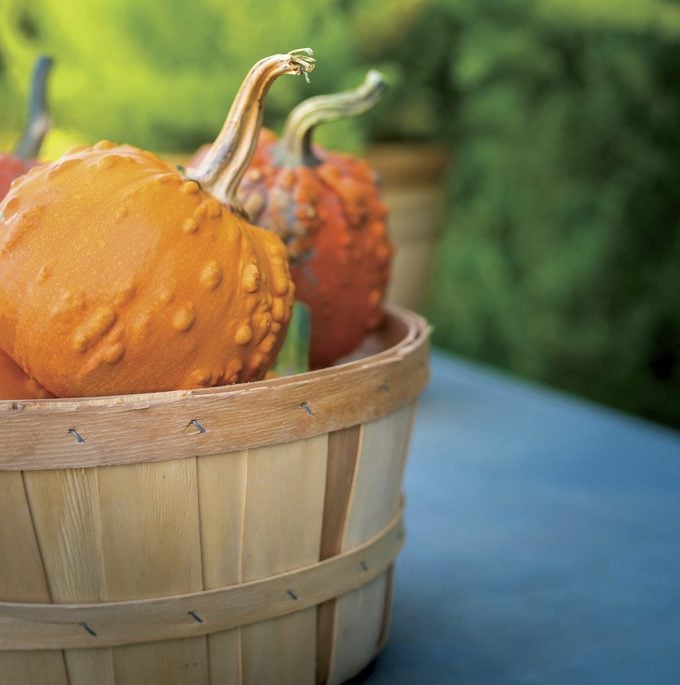
Toad
This compact plant, perfect for small gardens or containers, produces five to six small bright orange pumpkins covered with large bumps.
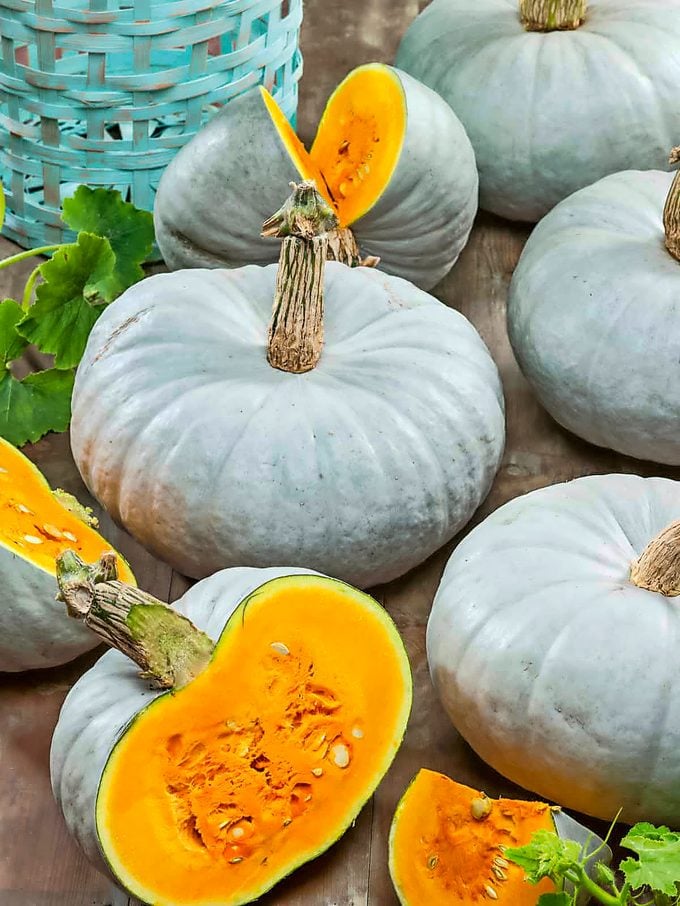
Blue Prince
These large flattened blue-gray pumpkins are both decorative and delicious. Use the roasted creamy flesh in favorite fall recipes.
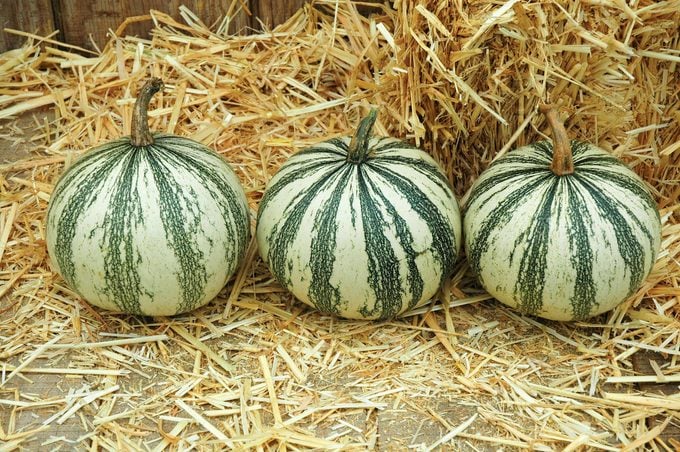
Silver Edged
The vine yields a heavy crop of green and silvery white striped fruits. The 5-to-8-pound pumpkins are packed with large seeds for roasting.
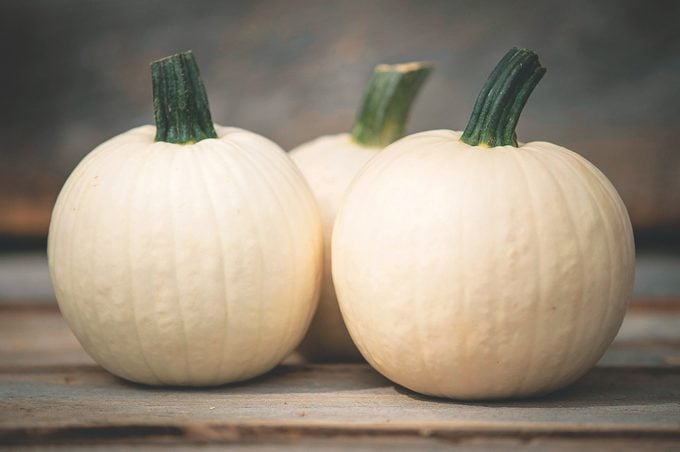
Shiver
Compact pumpkins with ghostly white skin and a round shape grow on a bush-type plant ideal for small spaces.
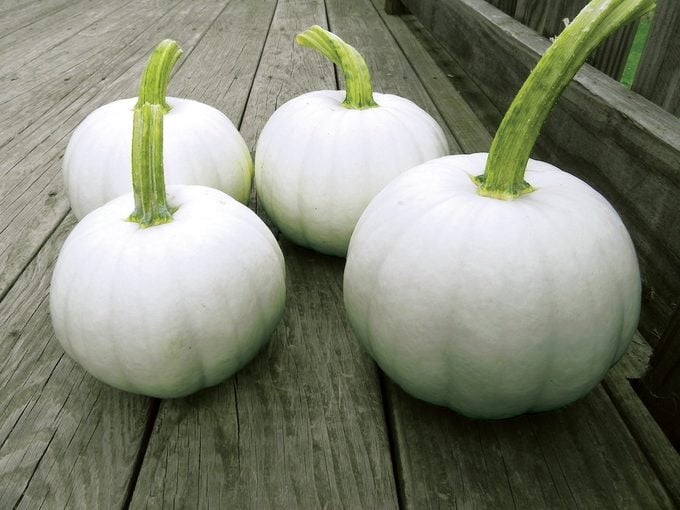
Blanco
The smooth white pumpkins are deer resistant and just the right size for small jack-o’-lanterns.
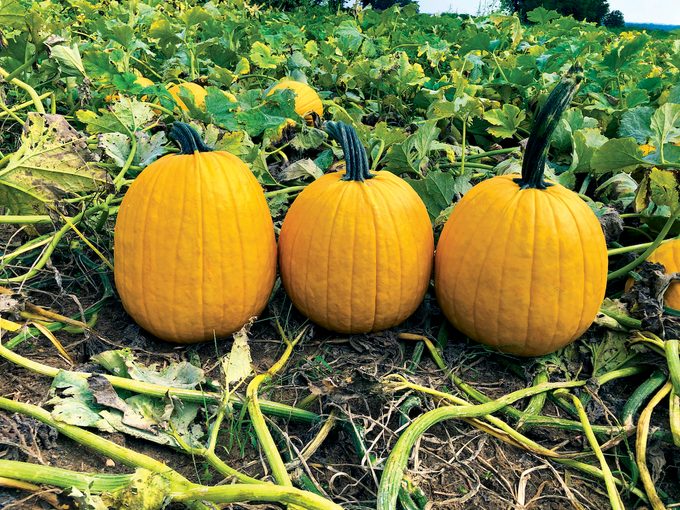
Lemonade
Golden yellow skin adds a sunny new hue to your seasonal autumn decor.





















